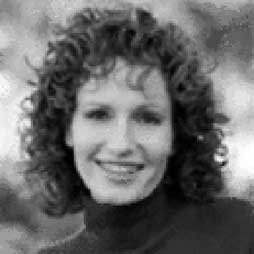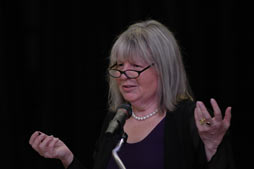By Chris Webb/nw news editor
(Part two in a four-part series on the rebirth of blues.)
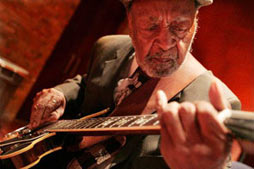
Dallas and the blues go way back, but when Dallas fell on hard times and the economy bottomed out, record labels started jumping ship and the blues put out a vacancy sign.
That sign has remained up for far too long; but, thankfully, the blues may finally be coming home.
Fort Worth and especially Dallas have been a refuge for the blues since its beginning.
Many of the first recorded blues artists were plucked from the city’s streets, and many of the city’s houses served as homes for blues pioneers.
T-Bone Walker and Stevie Ray Vaughn grew up and recorded in Oak Cliff. Robert Johnson recorded half his material in Dallas. Ray Charles lived there in the ’50s and Freddy King in the ’60s. The list goes on and on.
With Deep Ellum and Austin’s music scenes withering away and much of New Orleans music migrating to us, the rhythm and blues have begun to stir in DFW again.
So far, the blues movement has been a subtle storm, creeping back into the city’s veins slowly, discretely and without much help by the media.
Regardless of how the thunder clouds rolled in, the blues scene in DFW is absolutely booming now, but remnants of the past were keeping it under the radar.
The biggest problem, until recently, was a very secretive vibe among blues musicians.
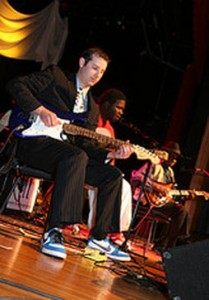
Many artists had been burned or could not break through to any point of recognition in their career. As a result, an exclusive mind-set developed.
Now people are taking notice, and the blues are becoming more accessible. Blues musicians are getting the promotion they need from new venues like the House of Blues, new sponsors, numerous open jams at clubs and restaurants and organizations like The Blue Shoe Project.
The Blue Shoe Project is a non-profit organization founded by Jeffrey Dyson and his son Michael Dyson, former TCC student.
The Colleyville-based organization was formed to raise awareness and education about the blues.
The organization has been pivotal in the revival of blues in DFW but did not reach national recognition until it took home a Grammy this year for its album, The Last of the Great Mississippi Delta Bluesmen Live in Dallas.
Now The Blue Shoe Project is one of the driving forces behind the blues comeback. But Michael Dyson says a lot of work is left ahead.
“DFW used to have one of the most vibrant blues scenes in the nation, and hopefully, it will again. Just like the blues, it’s going to take a lot of hard work,” he said.
The music, Dyson said, has experienced an inconsistent popularity through the years.
“The blues goes through hills and valleys. It may die down, but it will never die out. In parts of Dallas and Fort Worth and some surrounding areas, things are turning around,” he said. “People are getting excited, kids are getting into the blues and there is a real energy that’s been missing for some time.”
The energy Dyson speaks of can be felt any night of the week at local jams and big venues, and the stars can be found at both.
Numerous big-time bluesmen have been popping up in the most unlikely of places lately. People going out to eat are running into legends sitting in with the locals at free and open jams.
Lucky Peterson, a child prodigy who started playing guitar at 3, played on both the Ed Sullivan Show and theTonight Show at 5. He has been playing at some open jams like the Hole in the Wall in Fort Worth.
Recently, Buddy Whittington, blues guitar legend who just got done touring with B.B. King and John Mayall, dropped in to jam at the Back Porch Grill in Grapevine.
“Dallas has just sky rocketed lately. Finally, the big names are coming back through, and many of them are rediscovering why they fell in love with this area in the first place,” Whittington said.
“I grew up here my whole life,” he said. “I watched the blues scene thrive and then die as everyone went down to Austin to make a name for themselves. Lately though, it seems like the musicians are scrambling to come here.”
Despite the slow rise and underground nature of the blue’s movement, it is finally picking up steam. But what may surprise some is the age of those at the forefront of the movement.
High school and college students’ young faces dot both the stage and audience of most blues hotspots, further fanning the fire fueling the blues comeback.
“Everything on the Top 100 (songs) of today came from blues, but until lately, most kids haven’t been too involved in the blues, not because they don’t like it, but because they’ve never been exposed to it,” Dyson said.
“I see a lot more kids out there playing the blues when before it was just old timers. But it’s not your age or where you come from, it’s how you think, and these kids are bringing it back. The talent is scattered, but some of these kids just need the exposure to take off, and the blues scene in DFW is starting to be able to do that.”
These younger musicians have taken the torch, but it was not passed by the previous generation. A huge generation gap exists in the DFW blues scene.
At the clubs, the blues players are either up-and-coming young talents or gnarled veterans well past their time, but still in their prime.
“Ya know, I was starting to get tired of all the clubs I loved to play at turning into Kinko’s, so it’s just great to see all these new clubs. What is even better is the new talent,” Whittington said.
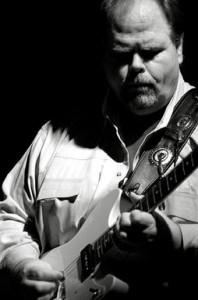
“It’s not like it used to be. We didn’t have online encyclopedias of lessons and song tabs. We usually just had a crappy guitar, and if mom was nice enough, a garage to play it in. Now these kids have open jams to go to and places like Guitar Center. It’s all just so much more accessible to learn,” he said. “Whatever though, it’s just great to see kids getting into music again instead of spending all their time playing video games and on the Internet. Besides, some of these kids are actually getting pretty damn good.”
Rather than stand at odds, the generation gap has been nothing but beneficial. The younger musicians look to the older crowd for guidance and advice. At the same time, the older crowd views these younger players as a shining neon sign of hope for their craft.
“It’s not going to happen overnight, but it’s coming. Players are rising to the occasion, and more and more I keep hearing people asking, ‘What is going on in Dallas?’ ” Dyson said.
“In the next five to 10 years, blues will return in full force to the top 100, and Dallas is going to be at the center. I can’t wait to see it happen,” he said.
Whether a result of the hard work done by The Blue Shoe Project, the surge of old bands jumping on the reunion tour bandwagon or the demise of neighboring blues scenes, it’s hard to tell. One thing is for sure, DFW and its youthful inhabitants have got a serious case of the blues.
























